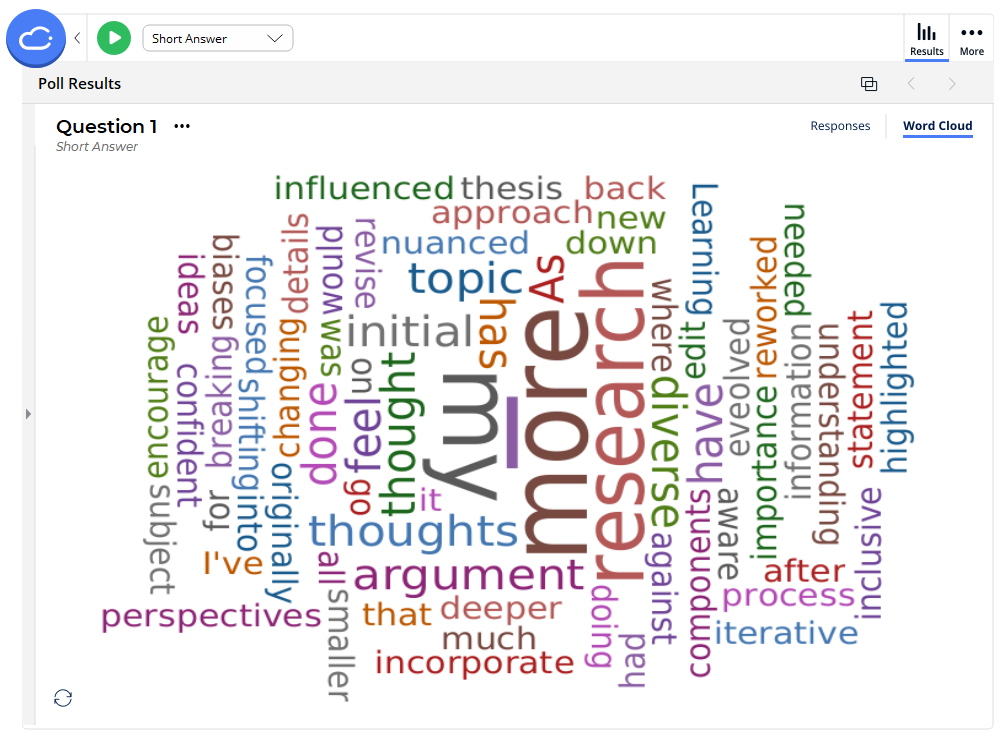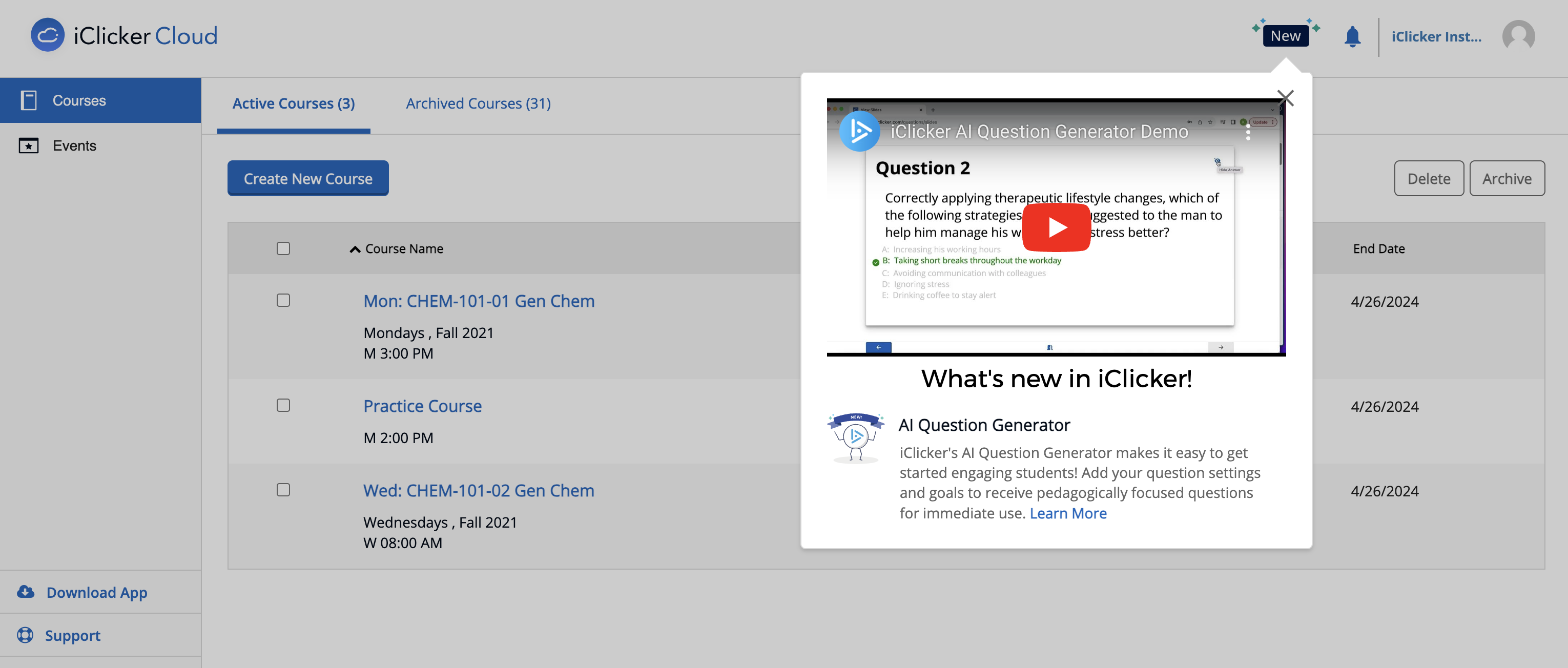Authentic Assessment in the Age of AI
What it is and how to harness its power to improve student engagement and outcomes

Photo Credit: Kentaroo Tryman
What is Authentic Assessment?
Based on constructivist theories of learning, authentic assessments help students construct meaning through contextualized learning experiences, rather than answering memory-based questions.
Authentic assessments provide students opportunities to demonstrate their ability to translate course concepts and apply higher-order critical thinking skills to construct understanding and help solve real-world problems. By emphasizing self-regulation and intrinsic motivation, authentic assessments create deeper, more active learning experiences that promote longer-term retention of course concepts.
Types of Authentic Assessments
Studies have shown that authentic assessments can improve the quality and depth of student learning, by increasing student autonomy, motivation, self-regulation, and metacognition (Villarroel, et al. 2018). With the wide availability of generative AI solutions that can answer knowledge-based questions and even produce research papers with relative ease, for many educators authentic assessments may be the answer to evaluating student learning and ensuring that students truly grasp course concepts. Below are common types of authentic assessments with example assignments (Messier 2022).
If ChatGPT can do it… often that's not a very interesting assignment.
Examples of Authentic Assessment Assignments Based On Learning Experiences
Inquiry-based learning
- Community-based projects: Allow students to design and execute a project with a real-life community to answer a question that they design themselves to address issues of import for the student and the community
- Concept-mapping: Have students create visual representations of information in the course or on their topic of inquiry as it evolves throughout the term
- Developing methodologies for solving a problem: Rather than focusing on only providing the final answer, students outline the methodologies used to solve the problem
- Fact deconstruction: Provide students with a list of ‘facts’ pertaining to a topic - or have students provide them - then assign students to identify sources that validate correct facts and invalidate false ones.
Problem-based learning
- Case Studies: Have students analyze real-world scenarios and make decisions based on their analysis.
- Research Projects: Assign students research projects that incorporate their personal interests. Focus on the process of the research: brainstorming, outlining, drafting, reviewing, and revising, not just the final deliverable. Include feedback opportunities for students to revise their work at each stage.
Scenario-based Learning
- Simulations and Role-Playing: simulations or role-playing exercises that model for students and allow them to practice applying course concepts and skills to experiences based on real-life interactions.
Project-based Learning
- Portfolios: Have students compile portfolios that showcase their work throughout the course or program. Include journaling exercises that provide an opportunity for students to reflect on their growth, the learning process itself, and the ways in which their work demonstrates mastery of course objectives.
- Project-Based Learning: Have students design a project that solves a real-world problem or meets a specific need of personal interest to them
Design-based Learning
- Creating a system or artifact to solve real-world problem
- Model construction
Alongside any of the authentic assessment activities above, instructors can require students to submit a reflective journal or blog throughout the course to assess students’ ability to connect theory with practice, reflect on their learning process, and articulate changes in their understanding or perspective.
Projects like these require students to exercise higher-order cognitive skills like data interpretation and synthesis of information in contexts that mirror and reflect real-world applications of course content.
What are the hallmarks of authentic assessment experiences?
According to Ashford-Rowe, et. al. (2014), authentic assessment experiences are defined by the extent to which they:
- Challenge understanding
- Evoke reflection
- Encourage collaboration
- Transfer to real-world or larger societal contexts
Instructors can ensure that the four characteristics of authentic assessments are present in assignments then give students multiple, diverse assessment opportunities and allow a degree of autonomy in choosing how they demonstrate understanding. This approach shifts the focus from performance on a limited number of events (like traditional exams) to an emphasis on synthesizing what they’ve learned.
Ready to create more collaborative learning experiences with your students? Create your free iClicker account today.
How iClicker can support Authentic Assessment
By design, authentic assessments often span multiple weeks. However, breaking down the component steps of the learning process creates engagement opportunities and teachable moments during class meetings throughout the duration of the course. Facilitating these in-class experiences is where iClicker can be a powerful pedagogical tool. In particular, iClicker can help instructors:

Support metacognitive processes:
In short, metacognition is being aware of and understanding one’s thought process (Flavell 1979). Learning research indicates that students with stronger metacognitive skills earn better grades, are more adept at transferring knowledge to new scenarios, and even graduate at higher rates (Stanton, et. al 2021). The use of self-reflective question prompts can improve student learning and course performance by helping students develop their metacognitive abilities.
Tech Tip: Support student development of metacognition by incorporating self-reflection throughout the course. Instructors can use iClicker’s short answer question functionality to administer and analyze student responses to self-reflection questions in class. By having students reflect and discuss with one another at different points along the process of completing their authentic assessments, students co-construct their understanding of the skills being taught and further develop their metacognitive abilities. iClicker’s confidence rating and exit polls can also be used to facilitate metacognitive reflection with students.
Ready to support students' metacognitive development?
Create a free instructor account.
Check for foundational conceptual understanding with low-stakes assessments:
Because authentic assessments often span several weeks, it is important for misconceptions of foundational knowledge required in the authentic assessment to be identified and addressed. Combining low-stakes assessments that engage students in reflecting on their budding understanding of course concepts, help them develop foundational understanding as they work on project-based authentic assessments.
Tech Tip: iClicker’s polling and quizzing functionality with its unique in-the-moment screen capture capability can be used to administer just-in-time low stakes assessments that check students’ understanding.

Ward against the use of AI by enhancing relevancy:
Rather than asking generic questions during class sessions, incorporate questions that reinforce relevancy for students by having students share and explore experiences related to their own projects and explore during class discussions using polling.
By making questions specific to the class students can still use ChatGPT but [it] can't answer the whole thing because it's not tied to class. That speaks to a general educational principle that we want anyway: alignment to our assignments, our readings, and what we're doing in class.
Tech Tip: With iClicker’s new AI Question Creator, instructors can create and deploy new questions in seconds that capture screen images that specifically relate to the class discussion, or even incorporate students’ own inputs and artifacts from their evolving authentic assessments to guide the class discussion.
Ready to create never-seen-before questions using generative AI?
Create your free instructor account.
Build a collaborative learning community:
A core characteristic of authentic assessment is the encouragement of collaboration. Create collaborative learning communities to support student learning and social metacognition (Chiu and Kuo 2009) as they work on their authentic assessment projects by having students collaboratively construct and provide feedback throughout the process of the project. For example, during class, students could work in small groups to evaluate one another’s citations for accuracy and bias. By doing this, educators are reinforcing the cognitive process in real-life scenarios and allowing students to exercise key parts of the process of knowledge creation during in-class experiences: challenging their own understanding, evoking reflection, and working collaboratively.
Tech Tip: iClicker is tailor-made to support collaborative learning and community-building methodologies like group work, think-pair-share, and peer learning through polling.
Conclusion
Prior to the wide availability of generative AI, creating a final deliverable required a person to have gone through the process. Even with purchased pre-written research papers, a human at one point went through the process of writing the paper for hire. Now, with widely available generative AI tools, students can recreate decent products with a bit of ingenious prompting. This new reality has made authentic assessment even more pressing for learners and educators.
By allowing students multiple, diverse assessment opportunities to demonstrate what they understand, assessments begin to shift the focus from a performance on a limited number of events to an emphasis on synthesizing what they’ve learned. When these are applied to real-life situations of import to students’ interests, challenge students’ understanding, invite opportunities for reflection and collaborative construction of meaning, more authentic development and assessment of student learning is possible.
Section Nine Header
Lorem ipsum dolor sit amet, consectetur adipiscing elit. Integer condimentum euismod enim in rutrum. Integer ut neque est. In vehicula facilisis tellus, id dignissim nibh aliquet quis. Pellentesque habitant morbi tristique senectus et netus et malesuada fames ac turpis egestas. Orci varius natoque penatibus et magnis dis parturient montes, nascetur ridiculus mus. Morbi cursus massa tellus, et pretium erat fermentum id. Curabitur ac erat sed lorem pharetra semper nec a massa. Quisque neque purus, aliquam vel varius blandit, suscipit et nisl. Phasellus faucibus hendrerit quam et venenatis. Vestibulum neque dolor, rhoncus dapibus placerat quis, accumsan cursus massa. Curabitur massa neque, sodales et interdum non, aliquet eu erat.
Maecenas imperdiet lorem vel orci accumsan tristique. Maecenas a molestie lacus. Pellentesque sit amet mauris luctus, consectetur neque quis, porttitor nisl. Pellentesque vel varius neque, sed mollis turpis. Pellentesque tortor neque, iaculis non euismod vel, venenatis ut nunc. Duis rutrum turpis lacinia turpis porttitor, ut faucibus lorem pharetra. Nullam fermentum, ligula sed commodo scelerisque, mi ipsum fermentum nisi, semper rhoncus odio ex ac purus. Aliquam ex nisl, pellentesque ac sapien luctus, venenatis dictum est. Phasellus sem justo, sagittis id elementum ut, suscipit sed risus. Fusce accumsan ex porttitor eros efficitur, ut dictum magna rhoncus. Aliquam at efficitur arcu. Nunc ut nunc placerat, feugiat ex a, accumsan purus.
Image Credit: Credit Here. Lorem ipsum dolor sit amet, consectetur adipiscing elit.
Section Ten Header
Lorem ipsum dolor sit amet, consectetur adipiscing elit. Integer condimentum euismod enim in rutrum. Integer ut neque est. In vehicula facilisis tellus, id dignissim nibh aliquet quis. Pellentesque habitant morbi tristique senectus et netus et malesuada fames ac turpis egestas. Orci varius natoque penatibus et magnis dis parturient montes, nascetur ridiculus mus. Morbi cursus massa tellus, et pretium erat fermentum id. Curabitur ac erat sed lorem pharetra semper nec a massa. Quisque neque purus, aliquam vel varius blandit, suscipit et nisl. Phasellus faucibus hendrerit quam et venenatis. Vestibulum neque dolor, rhoncus dapibus placerat quis, accumsan cursus massa. Curabitur massa neque, sodales et interdum non, aliquet eu erat.
Maecenas imperdiet lorem vel orci accumsan tristique. Maecenas a molestie lacus. Pellentesque sit amet mauris luctus, consectetur neque quis, porttitor nisl. Pellentesque vel varius neque, sed mollis turpis. Pellentesque tortor neque, iaculis non euismod vel, venenatis ut nunc. Duis rutrum turpis lacinia turpis porttitor, ut faucibus lorem pharetra. Nullam fermentum, ligula sed commodo scelerisque, mi ipsum fermentum nisi, semper rhoncus odio ex ac purus. Aliquam ex nisl, pellentesque ac sapien luctus, venenatis dictum est. Phasellus sem justo, sagittis id elementum ut, suscipit sed risus. Fusce accumsan ex porttitor eros efficitur, ut dictum magna rhoncus. Aliquam at efficitur arcu. Nunc ut nunc placerat, feugiat ex a, accumsan purus.
Image Credit: Credit Here. Lorem ipsum dolor sit amet, consectetur adipiscing elit.
Section Eleven Header
Lorem ipsum dolor sit amet, consectetur adipiscing elit. Integer condimentum euismod enim in rutrum. Integer ut neque est. In vehicula facilisis tellus, id dignissim nibh aliquet quis. Pellentesque habitant morbi tristique senectus et netus et malesuada fames ac turpis egestas. Orci varius natoque penatibus et magnis dis parturient montes, nascetur ridiculus mus. Morbi cursus massa tellus, et pretium erat fermentum id. Curabitur ac erat sed lorem pharetra semper nec a massa. Quisque neque purus, aliquam vel varius blandit, suscipit et nisl. Phasellus faucibus hendrerit quam et venenatis. Rhoncus dapibus placerat quis, accumsan cursus massa. Curabitur massa neque, sodales et interdum non, aliquet eu erat.
Maecenas imperdiet lorem vel orci accumsan tristique. Maecenas a molestie lacus. Pellentesque sit amet mauris luctus, consectetur neque quis, porttitor nisl. Pellentesque vel varius neque, sed mollis turpis. Pellentesque tortor neque, iaculis non euismod vel, venenatis ut nunc. Duis rutrum turpis lacinia turpis porttitor, ut faucibus lorem pharetra. Nullam fermentum, ligula sed commodo scelerisque, mi ipsum fermentum nisi, semper rhoncus odio ex ac purus. Aliquam ex nisl, pellentesque ac sapien luctus, venenatis dictum est. Phasellus sem justo, sagittis id elementum ut, suscipit sed risus. Fusce accumsan ex porttitor eros efficitur, ut dictum magna rhoncus. Aliquam at efficitur arcu. Nunc ut nunc placerat, feugiat ex a, accumsan purus.
Image Credit: Credit Here. Lorem ipsum dolor sit amet, consectetur adipiscing elit.
Section Twelve Header
Lorem ipsum dolor sit amet, consectetur adipiscing elit. Integer condimentum euismod enim in rutrum. Integer ut neque est. In vehicula facilisis tellus, id dignissim nibh aliquet quis. Pellentesque habitant morbi tristique senectus et netus et malesuada fames ac turpis egestas. Orci varius natoque penatibus et magnis dis parturient montes, nascetur ridiculus mus. Morbi cursus massa tellus, et pretium erat fermentum id. Curabitur ac erat sed lorem pharetra semper nec a massa. Quisque neque purus, aliquam vel varius blandit, suscipit et nisl. Phasellus faucibus hendrerit quam et venenatis. Vestibulum neque dolor, rhoncus dapibus placerat quis, accumsan cursus massa. Curabitur massa neque, sodales et interdum non, aliquet eu erat.
Maecenas imperdiet lorem vel orci accumsan tristique. Maecenas a molestie lacus. Pellentesque sit amet mauris luctus, consectetur neque quis, porttitor nisl. Pellentesque vel varius neque, sed mollis turpis. Pellentesque tortor neque, iaculis non euismod vel, venenatis ut nunc. Duis rutrum turpis lacinia turpis porttitor, ut faucibus lorem pharetra. Nullam fermentum, ligula sed commodo scelerisque, mi ipsum fermentum nisi, semper rhoncus odio ex ac purus. Aliquam ex nisl, pellentesque ac sapien luctus, venenatis dictum est. Phasellus sem justo, sagittis id elementum ut, suscipit sed risus. Fusce accumsan ex porttitor eros efficitur, ut dictum magna rhoncus. Aliquam at efficitur arcu. Nunc ut nunc placerat, feugiat ex a, accumsan purus.
Image Credit: Credit Here. Lorem ipsum dolor sit amet, consectetur adipiscing elit.
Try iClicker AI Question Creator
The new iClicker AI Question Creator combines pedagogy and generative AI to help you create authentic assessments in real-time. Create a free instructor account to beta test the AI Question Creator today.
Edited by: Symphonie Swift
Sources:
- Kevin Ashford-Rowe, Janice Herrington & Christine Brown (2014) Establishing the critical elements that determine authentic assessment, Assessment & Evaluation in Higher Education, 39:2, 205-222, DOI: 10.1080/02602938.2013.819566
- Chiu, Ming & Kuo, S.W.. (2009). Social metacognition in groups: Benefits, difficulties, learning, and teaching. Metacognition: New Research Developments. 117-136.
- Flavell, J. H. (1979). Metacognition and cognitive monitoring: A new area of cognitive–developmental inquiry. American psychologist, 34(10), 906.
- Messier, N. (2022). “Authentic Assessments.“ Center for the Advancement of Teaching Excellence at the University of Illinois Chicago. Retrieved [today’s date] from https://teaching.uic.edu/resources/teaching-guides/assessment-grading-practices/authentic-assessments/
- Stanton JD, Sebesta AJ, Dunlosky J. Fostering Metacognition to Support Student Learning and Performance. CBE Life Sci Educ. 2021 Jun;20(2):fe3. doi: 10.1187/cbe.20-12-0289. PMID: 33797282; PMCID: PMC8734377.
- Verónica Villarroel, Susan Bloxham, Daniela Bruna, Carola Bruna & Constanza Herrera-Seda (2018) Authentic assessment: creating a blueprint for course design, Assessment & Evaluation in Higher Education, 43:5, 840-854, DOI: 10.1080/02602938.2017.1412396
![IN.IMG-JPG.[Headshot_Phoenix Harvey].jpg](https://go.macmillanlearning.com/rs/122-CFG-317/images/IN.IMG-JPG.%5BHeadshot_Phoenix Harvey%5D.jpg)